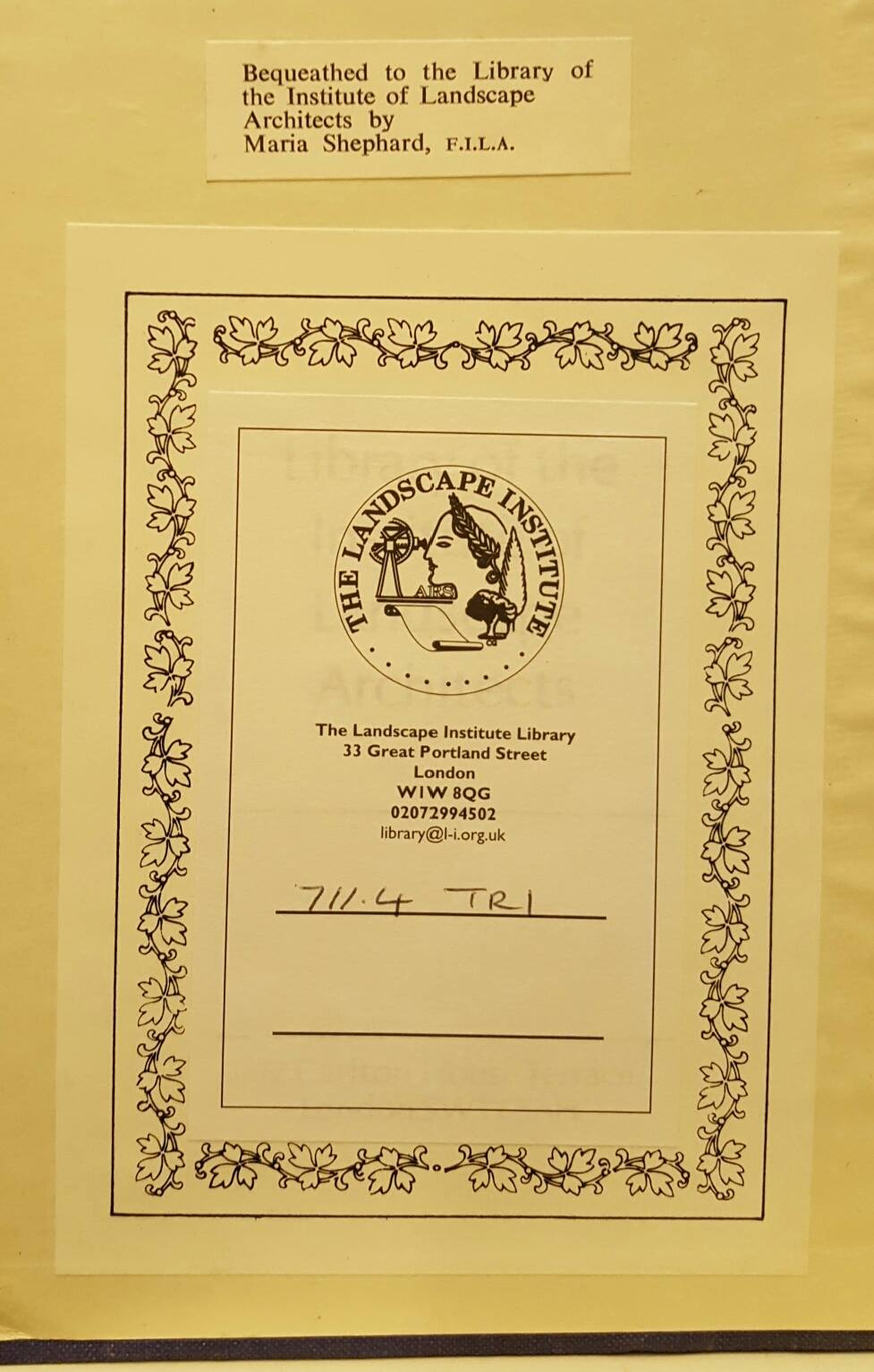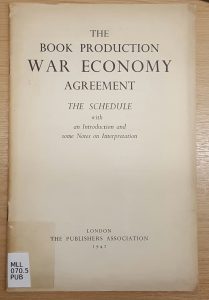Discovering the Landscape: From London traffic to an Italian Prisoner of War camp

Over the course of a large scale cataloguing project, many hundreds of items pass through your hands. Since acquiring the library and archive of the Landscape Institute in late 2013, we have made nearly 2500 books available to readers here at MERL. Added to this figure are metres of journals and pamphlets – and this is to say nothing of the huge amount of varied and fascinating archival material that has been catalogued and made to available to readers so far (more on this next time).
Within this wealth of material it is inevitable that some items catch your eye or stick in your memory more than others. Striking cover designs, exquisitely illustrated plates, or an unexpected personal relevance are often those that stay with you.
Surprises keep things interesting! Sometimes that faded cover, with its generic title, gives way to a book with a fascinating story or provenance – often raising more questions than you can answer – which transform the item you hold in your hands from every day to truly unique.
Town planning and road traffic, by H. Alker Tripp.
London: Edward Arnold & Co., 1942.

As with all of our LI books, Town Planning has an LI book plate pasted down on the inside cover. It also has a small label which tells us that the book was donated to the LI library by Maria Shephard.

Maria Teresa Parpagliolo Shephard (1903-1974) was an Italian landscape and garden designer. A member of the Landscape Institute (frequently contributing to their journal) and involved in the setting up of IFLA, Parpagliolo worked and travelled across Europe as a pioneer of European landscape design. Parpagliolo trained with Percy Cane in the early 1930s and worked on a string of high profile projects including the Regatta Restaurant Garden at the Festival of Britain in 1951.
In 1946, Parpagliolo married Ronald Shephard, the “‘town major’ of the British military in Rome, whom she met during Rome’s liberation by the Allied Forces. She followed him back to England in 1946” (Dümpelmann, 2010).
Landscape architects gifting their books to the LI library after their deaths is not unusual in itself.
Pencil inscriptions and an ink stamp on the title page relating to a ‘Camp Leader’ at a ‘Campo Concentramento 82’ – however – are not something I have seen before.
Curiouser and curiouser. Pasted on to the back of the title page is a label confirming that the book was sent to ‘The Camp Leader’ via the ‘Prisoner of War Post’. According to the I Campi Fascisti project, Campo Concentramento 82 was a prisoner of war camp in Laterina, near Arrezzo, where the Italian fascist state held thousands of British, Greek, New Zealander, South African and Greek prisoners of war during WWII.

A further notable feature of the title is the ‘Book Production War Economy Standard’ stamp printed onto the back of the title page (you can see this at the top of the post). We have a small number of other books within our collections which also feature this intriguing marking.

We have all heard of rationing during WWII, but did you know that even paper was rationed? From 1940-49 paper was rationed, with publishing companies having to cut back on their use of paper by 60%. In 1942 ‘The Book Production War Economy Agreement’ between the Ministry of Supply and the Publishers Association introduced strict guidelines which covered, for example, print size, words per page and blank pages. Published in 1942, Tripp’s Town Planning could have been one of the first titles to published under this scheme. It does contain one large fold out plate. Despite these restrictions, demand for books grew during WWII.
Why was this title sent to a prisoner of war camp leader via the prisoner of war post? Perhaps in the context of needing to rebuild urban areas after the war. How did Maria Parpagliolo have this book? Could a member of her family, or her husband, have been connected with the camp? Perhaps she purchased it as a reference book and the provenance is incidental. This fascinating book gives us a tantalising insight into this historical period – but raises more questions than answers!

Please contact us (using the form below or at merl@reading.ac.uk) if you have any further information.
For more on Maria Parpagliolo, Sonja Dümpelmann has published several articles and a book (such as Dümpelmann, S. (2010). The landscape architect Maria Teresa Parpagliolo Shephard in Britain: her international career 1946–1974, Studies in the History of Gardens & Designed Landscapes, 30:1, 94-113, DOI: 10.1080/14601170903217045).
For more on publishing in war time, Valerie Holman’s Print for Victory is a great start.
Claire Wooldridge, Project Librarian
One thought on “Discovering the Landscape: From London traffic to an Italian Prisoner of War camp”
Leave a Reply
You must be logged in to post a comment.


What a fascinating story about the provenance of this particular book, Claire! I had heard of Maria Shepherd and the Landscape Institute produced their monograph on her some years back, but knew nothing about this particular story. Its possible that one or two of the contributors to the monograph might be able to shed more light on the story and FOLAR will certainly help to highlight your request for more information on our website.
RE your comment about the shortage of paper. In fact, I did know a little on this because I read about it in some of the back issues of the ILA Journal published during/ just after the war. There is mention there about the Institute’s inability to produce more issues for its small band of members precisely because of the lack of paper.